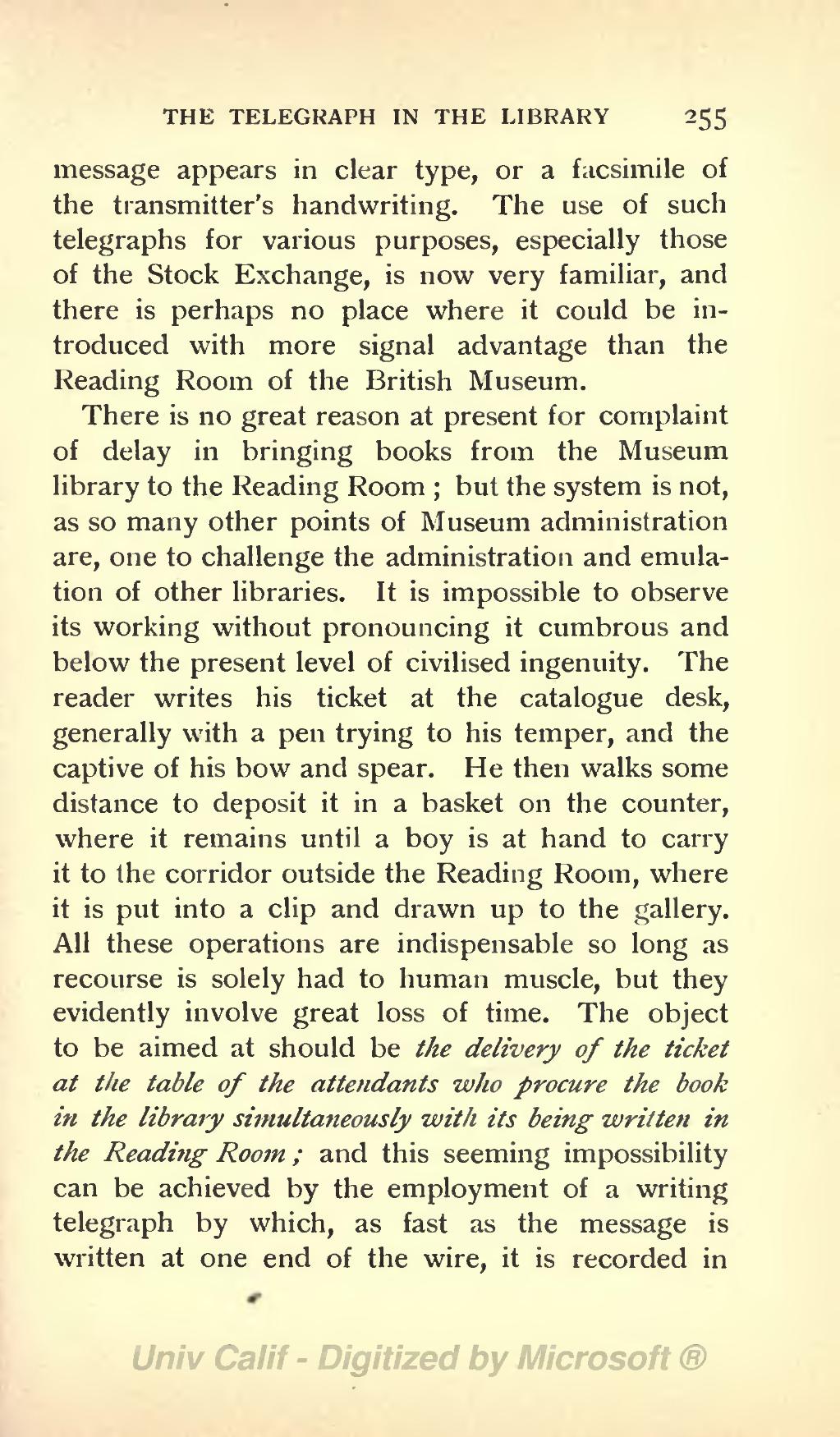message appears in clear type, or a facsimile of the transmitter's handwriting. The use of such telegraphs for various purposes, especially those of the Stock Exchange, is now very familiar, and there is perhaps no place where it could be introduced with more signal advantage than the Reading Room of the British Museum.
There is no great reason at present for complaint of delay in bringing books from the Museum library to the Reading Room; but the system is not, as so many other points of Museum administration are, one to challenge the administration and emulation of other libraries. It is impossible to observe its working without pronouncing it cumbrous and below the present level of civilised ingenuity. The reader writes his ticket at the catalogue desk, generally with a pen trying to his temper, and the captive of his bow and spear. He then walks some distance to deposit it in a basket on the counter, where it remains until a boy is at hand to carry it to the corridor outside the Reading Room, where it is put into a clip and drawn up to the gallery. All these operations are indispensable so long as recourse is solely had to human muscle, but they evidently involve great loss of time. The object to be aimed at should be the delivery of the ticket at the table of the attendants who procure the book in the library simultaneously with its being written in the Reading Room; and this seeming impossibility can be achieved by the employment of a writing telegraph by which, as fast as the message is written at one end of the wire, it is recorded in
